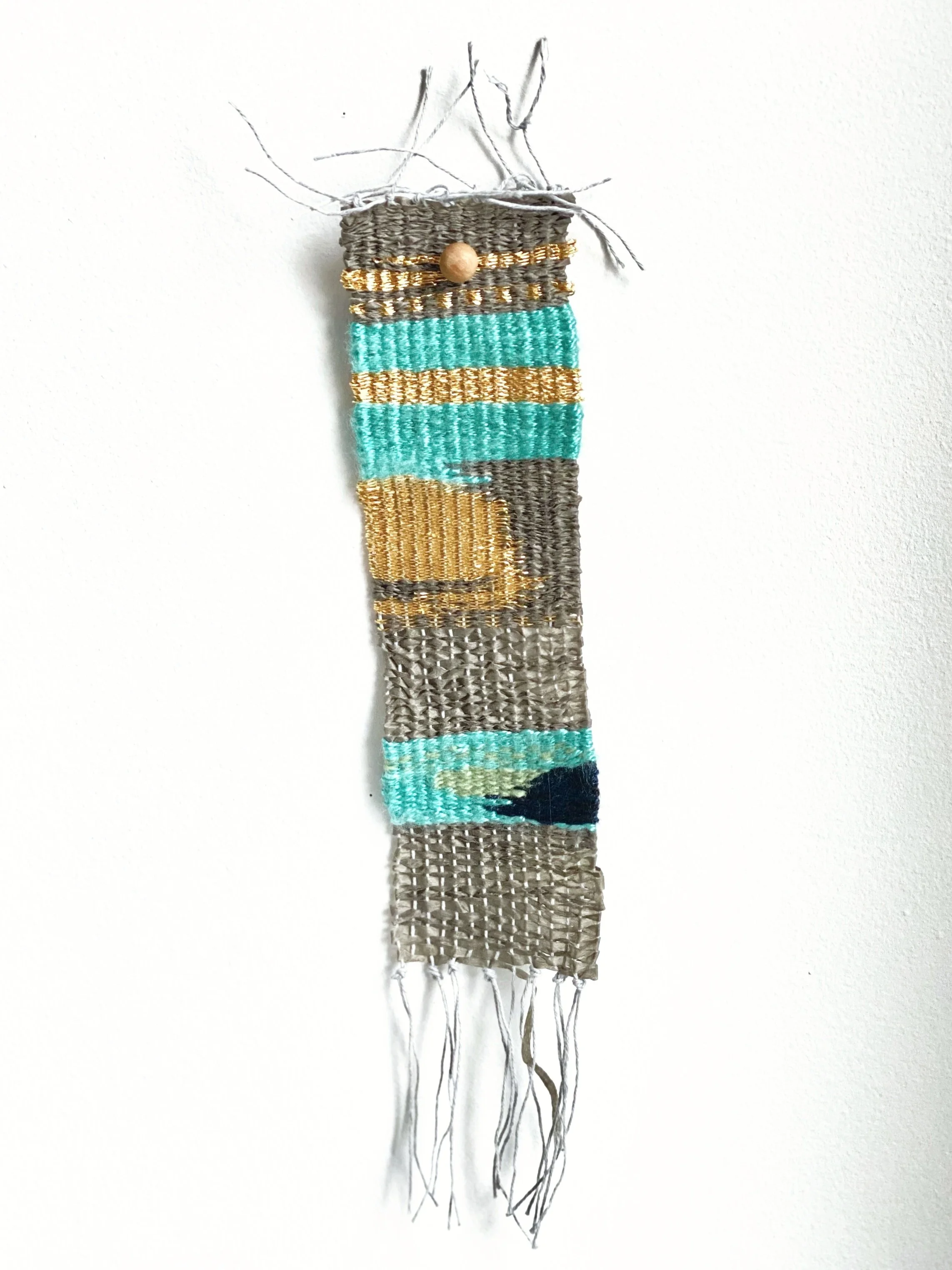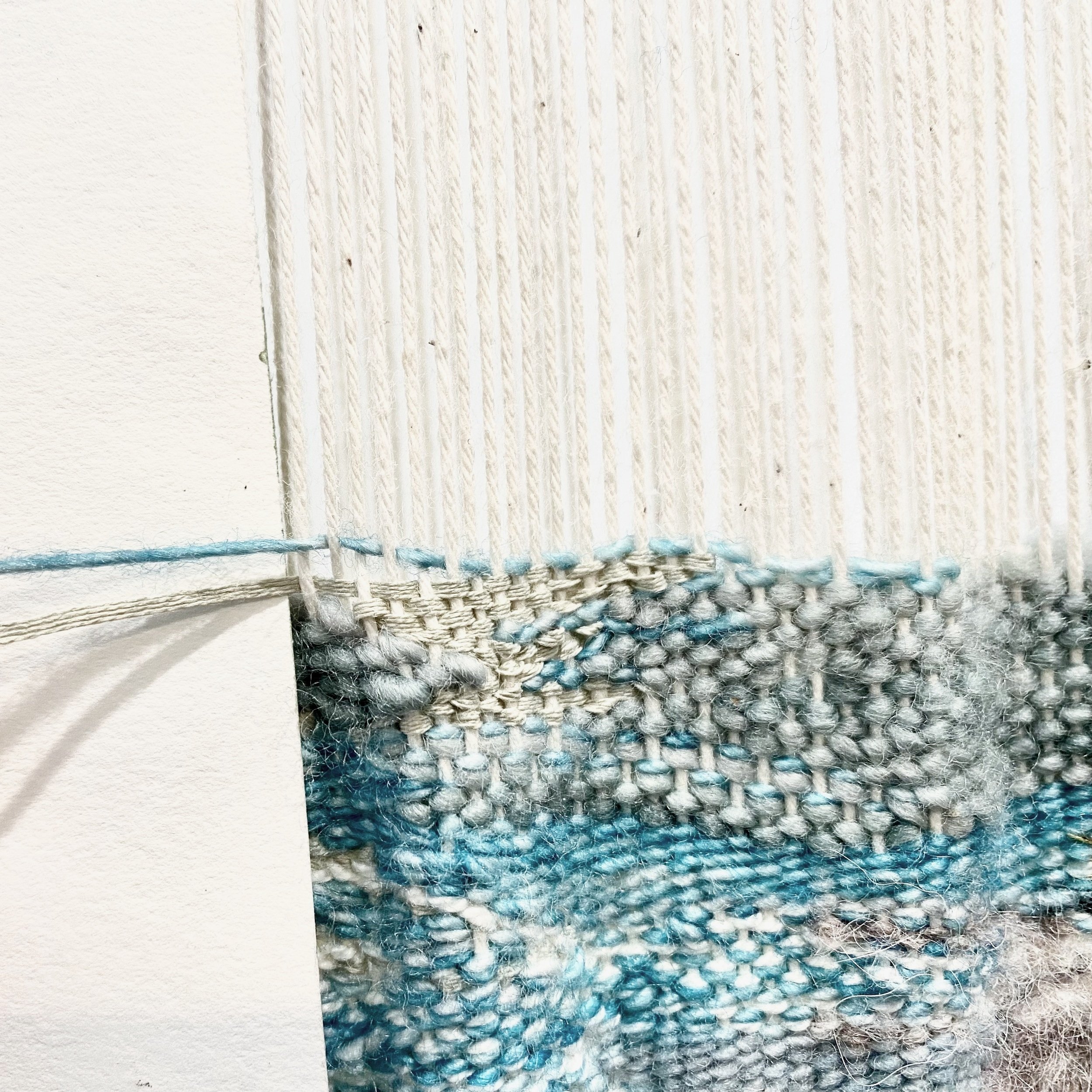Very glad to have come across this weaving weft yarn guide. I’m very much an experimental weaver and learn by trial and error, but I would have saved a lot of frustration had I come across this guide earlier. The information provided by Weaver House Co would be especially helpful for new weavers who are trying to understand how different types of weft (the yarn placed horizontally that you beat down to create your fiber art) affect the structure of your piece.
When I started weaving, I sourced local yarn from Neighborhood Fiber Co. I visited their store in person to see their wide range of hand dyed wool fibers. During this time, I was focused on learning a new craft and because buying fibers can get expensive and I didn’t know what to look for— I only bought from their clearance sections. These fibers were marked down due to spotty or uneven dyeing. Regardless of the imperfections, the quality and saturated hues of their fibers are incredibly vibrant. My approach to weaving is not dependent on long stretches of consistent color so for me buying from their clearance section while I taught myself to weave was a huge benefit.
Sample weaving with plant based yarns and metallic fibers
In my experience, making art and especially weaving is a slow process so making smart decisions like researching what type of yarn to use can help you learn more efficiently.
Wool from Neighborhood Fiber Company
Some of the yarn I use regularly in my work are as follows:
Novelty yarns such as metallic threads or poly cords found at estate sales, thrift stores, etc
Any of Neighborhood Fiber Co’s Fingering Weight Silk or Wool Yarn
Neighborhood Fiber Co’s Chromium Collection is described as.. “A unique blend of silk noil wrapped around a stainless steel core, this sculptural yarn pairs well with other yarns or knits up nicely--and much like linen--on its own. Laceweight with a sparkly, textured character.” The strands are thin and work well blended in with thicker strands of wool yarn.
Isager Japansk Bomuld Strong tape yarn with even uniform color and lightweight paper-like texture.
Isager Japansk Bomuld & Neighborhood Fiber Co’s Wool woven together
Looking back now, I’m realizing I may have made numerous disappointing tapestries because I started out using cheap commercially dyed cotton yarns found at big box stores. The colors were dull and lifeless and as consequence so was the art. I highly recommend if you’re learning a new craft like weaving to reach out to your local shops first to see your materials in person. Listen to their stories and if you get a chance talk with the people who source your yarn and dye them with their own hands. If you’re on a limited budget starting out don’t be afraid to ask them if they have any yarn set aside that didn’t make it to the showroom. Researching other fiber artists and determining if they use animal, plant, synthetic based fibers or mixed fibers will help you understand what to use in your own projects.


